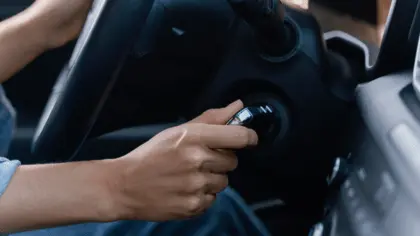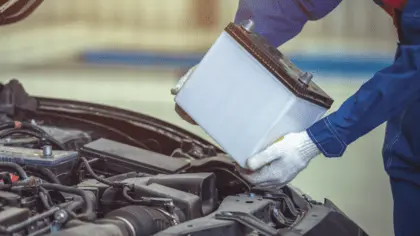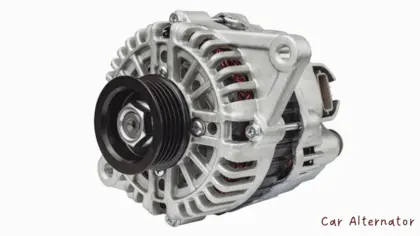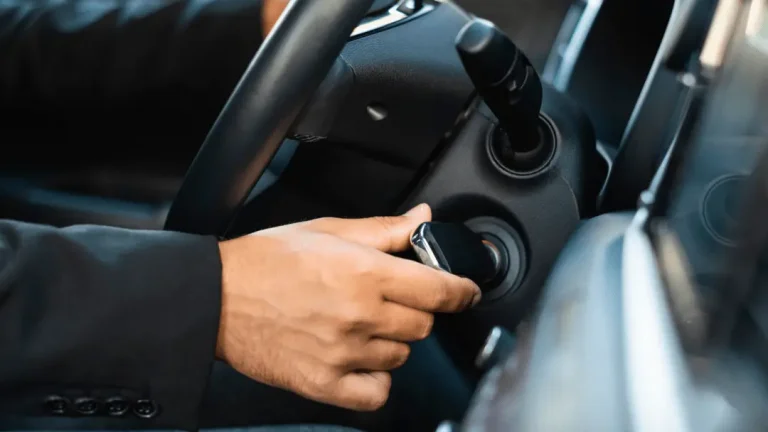Experiencing car troubles inside is extremely common. Your car acts normally when you turn the key, but suddenly the engine cranks for a while before ultimately turning on. However, there is a possible difficulty that we face in “Car Struggles To Start But Runs Fine.” What could be the reason?
Basically, the starter motor troubles, mechanical wear, and failure, battery condition, wiring problems, fuel-pump health, or perhaps the temperature conditions are to blame when the automobile won’t start but else runs okay. They are the main culprits that make you suffer!
Isn’t this a frustrating situation? Usually, a properly functioning automobile can start within 3 seconds. But your one’s trouble first and then starts to run. Not to worry! First, do identify the problem yourself before spending a lot of money or having the automobile serviced. Let’s find out all the issues and fix them!
Related article: Car hesitates to start but runs fine
What Happens When Your Car Struggles to Start?

There are so many issues that you may face. Therefore, you need to identify the issue first and then go for the solution. Usually, battery problems, cable issues, or environmental matters disturb the car’s ability to start easily.
It will cost a lot of money to repair or replace by an expert, so it’s better if you check the problem first and then focus on the repair or replacement. Anyway, if you prefer more information, go through the entire article.
Common Things to Do When Struggling to Start the Car
- Try cycling the key
- Tap the battery terminal
- Pressing the starter
- Shift the shifter
- Replacing the relays
- Smack the fuel tank
- Clear a flooded engine.
Determine the Problem
Identifying the issue should be the first step before looking for a solution. Determine whether the car is new but having problems or an old one.
Consider what you might have missed as a starting point. The car hasn’t been used for a very long time. You must also inspect the vehicle’s components for leaks or damage. Remember, troublesome signals should be fixed immediately.
Battery Problems

When a car has trouble starting, the first thing we look for is a battery issue. The power of your car comes from the battery. We have come across so many problems with the batter that we will now talk about them.
- Electrical equipment, including the fuel pump and starter motor, won’t have enough power to operate if the battery keeps getting older. It’s crucial to charge the car battery. Car starting issues can arise from a lack of charge.
- Vehicles that run great but won’t start at first may have problems with faulty batteries. Battery drainage is the first sign of a problem with the charging system. It takes several tries to start the car since there is insufficient power to fully charge the battery.
- The car won’t start because of battery drain, another possibility. It is more difficult to start an engine when a battery is failing because it lacks the power to give the charge needed by the battery.
- After starting your automobile, if the dashboard battery light is on or remains the same, there is an alternator issue.
- The car battery could potentially make it more difficult to start the vehicle due to battery rust or terminal corrosion. There may be a clicking sound. Look for green or blue deposit buildup on your battery.
- The entire electrical system can be entirely shut down by loose wire connections or battery cables, or they can cause sound through buzzing. The battery cable may need to be changed right away.
- A battery electrolyte is a liquid-type item. Battery performance becomes poor or recharging will be necessary if electrolyte levels are low. Most garages should require a quick fix to change the battery.
- If you detect a sulfur smell in your vehicle, it may be a sign that your battery is leaking fluid that damages the car’s parts. Fix it immediately.
- A lot of lead batteries don’t react well to being overcharged or over-discharged. You might require a battery jump-start, a replacement battery in its entirety, or any one of its components.
- A vehicle battery consists of six wet cell batteries. Batteries are linked by straps that run from one positive battery plate to the other negative plate. However, the proper composition of the battery is crucial to starting the car.
Alternator Issue
Your engine is cranking over but not starting right away, and there are few sounds that can make you panic more than that. It’s a normal problem to hear a continuous rapid clicking. Generally, a lack of power from car batteries prevents engine start-up.
In that case, a voltmeter should be used to verify the output voltage levels. But if you find the output under 12, call the mechanic.
Flickering or Blinking Lights
Noticing the car’s headlights are blinking or flickering, but the car is not starting when the battery is not properly charged. Therefore, either replace the bad battery or have it fixed.
Voltage Leaks
Starting the car will be challenging if the starting power supply voltage is less than 11.8V. Try it numerous times after turning off all other electrical devices. Turn on your meter and fix the 10-amp DC. This is another factor in the battery’s poor performance.
Signs of Poor Alternator

- A broken alternator frequently results in a slowdown in engine starting. To confirm the error, examine the ignition system. Because of a worn-out drive belt, your car will struggle to start but still operate smoothly, along with the difficulty of turning. This is followed by loud noises arising from underneath your vehicle.
- The starter motor, the key, the alternator, and miles of wiring are a few more noteworthy parts of the electrical system. So, check that the electrical sides are in good shape.
- Hearing a clicking noise when starting with the ignition is a clue of wear and tear in the starter relay or motor. The motor will spin more slowly if less power is transferred. In order to overcome serious damage, take rapid action to fix it.
- In your ignition, there is a small electrical switch. The vehicle will start when the key is turned on. Your ignition switch breaks down as a result of overuse or exposure to extremely high temperatures. Therefore, you should call the mechanic to have it fixed.
- This system enables spark plugs to ignite the fuel and transforms battery electricity into electric power. But there is not enough transformation when the ignition coil wears out and energy lags. The car won’t work if the spark plugs don’t receive sufficient power.
- You might also notice tears in the coil. Make sure you keep the ignition coil safe.
- The timing of the fuel’s ignition when the car is started is referred to as ignition timing. During the summer, when it is hot and humid, this is quite important. It prompts an early ignition of the fire and air mixture.
- On the other hand, wintertime delays the timing of the ignition and the spark plug, causing insufficient burning. Furthermore, the ignition starts when the piston starts to leave the cylinder. Provide enough heat and electricity to fix the problem.
- Your car’s spark plug has to ignite in order to close the gap. Replace each spark plug with a new one. Carbon can build up on worn-out spark plugs as well. It will be necessary to swap out the grit that resembles black soot.
- So, if you think the alternator is not operating well, maybe it’s time to replace the alternator.
Related spark plug: how long can you drive with bad spark plugs?
Fuel Issues
- As your car’s fuel passes through it, the fuel filter removes unwanted pollutants and damages filter.
- Particles including dirt, dust, and corrosion restrict the flow of fuel through the line and, in the event that they bypass the filter, could harm your engine.
- Using fuel of poor quality will undoubtedly make your engine operate late.
- An air filter that provides the vehicle’s combustion chamber with oxygen. It also prevents dirt, contaminants, and debris from entering the engine.
- The fuel injector’s function is to put fuel in the engine. For the combustion process to function properly, the engine must receive the proper air-to-fuel ratio. As a result, you must swap out the injector. A multimeter or OBD II code reader is required.
- Your car’s fuel pump moves fuel between the components and the tank. Your automobile won’t start if energy isn’t getting downstream to the engine. Therefore, go next to your car’s gas cap and check whether you can hear a pump silently operating or not. Replace the pump instead.
- A frozen fuel line can be another disturbance as the pump becomes less strong on a cold winter day, which reduces the amount of supply going to the engine. As a result, getting the pump heated up can require restarting your automobile a few times.
- The automobile battery won’t receive enough power to charge as a result of a charging system delay brought on by a loose drive belt.
Moisture and Environmental Issues
- Another cause of the car not starting problem is a defective or worn-out solenoid. When connecting the battery’s power to the starter motor, look for a coil with a cylindrical shape. Remember, no noise indicates problems. Fix it!
- An excessive level of oil should be checked. The spark plugs might get overly wet. Keep the oil level under control, though.
- The clogged distributor’s cap cannot deliver enough energy to the cylinders if it contains contaminants like moisture, dirt, and other impurities. Keep the car neat and clean.
- The temperature is often optimized and controlled by the coolant sensor during the fuel and air combination to avoid any heat-related damage.
- Your vehicle will be shielded from vandalism and theft by the anti-theft technology. Generally, the car is stopped when the power is interrupted. Therefore, you might need to reset the car, check the battery, or try the key tricky idea with your steering wheel.
- Car struggles to start when the engine is cold, which generally happens due to environmental issues where moisture is stuck. Additionally, faulty sensors, poor fuel delivery, weak ignition sparks, and poor electric current flow will occur. But fix the vehicle.
Tools to Fix Car Difficulty
You can easily use sophisticated diagnostic tools to identify and rapidly resolve the issue. Let’s share the best tools that a professional mechanic uses to fix the vehicle’s problems.
- OBD Diagnostic: Read or Reset
- OBD Diagnostics: Pro
- Jump Cables
- Socket Set
- Torch
- Multimeter
- Battery Charger
- Fuel System Cleaner
- Impact Wheel Gun
- Starter Tool Kit
- Pro Car Jack
- Oil Leak Stop.
See more: best oil for Subaru WRX.
FAQ
Why does my car act like it doesn’t want to start?
Your car acts like it’s starting because of environmental factors; a failing or dead battery; weak or corroded connection cables; a damaged alternator; or a starter problem.
Why does my car take long to start in the morning?
The battery, the electrical system, or the cold weather could all be the source of an internal issue with the car. Because the chemical reaction is slower on a cold day than it is on a warm morning. Also, car batteries produce less electrical current when it is cold.
How do you fix a hard start on a car?
One of the most frequent causes of a hard starting engine is fouled plugs. Besides this, a bad fuel pump, clogged fuel filters, a bad throttle position sensor, also known as TPS, and a bad coolant sensor are responsible.
However, you can start the car while it is in the park, check the battery, inspect the starter, or check the spark. Restore and replace as needed.
What are the signs fuel pump is going bad?
An insufficient fuel pump will force the engine to run hot, stop while driving and be challenging to start.
Concluding Section
So, it’s time to get relief from the “Car Struggles To Start But Runs Fine” issue. You won’t have to face any trouble while you want to ride in the car. We discussed all of the possible causes and solutions to car problems.
Fix any constant problems like engine, alternator, or battery difficulties. By using DIY instruments, you can check, rule out, or confirm a lot of car troubles. We hope you have got your answer.


